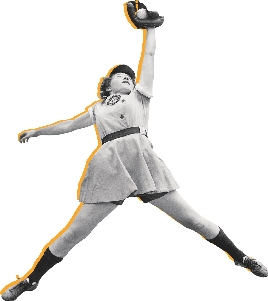
A New League
World War II erupted just twenty years after World War I. The U.S. entered the conflict several years later, in 1941. Baseball officials offered to stop playing the game for as long as the war lasted. They felt this would help support the country.
But President Franklin D. Roosevelt didn’t want the national pastime to stop. In a letter to baseball officials, he wrote, “I honestly feel that it would be best for the country to keep baseball going.” The games continued.
Many players did go from ball fields to battlefields. Their absence gave women a chance to play ball professionally. Many other women went to work, too. They filled the jobs men left to fight in the war.
The All-American Girls Professional Baseball League formed in 1943. Talented young women came from all over the U.S. and Canada to play in the new league. Some of its players were as good as the men they replaced.
The league proved so popular that it continued after the war. It didn’t fold until 1954. By then, more than 600 women had played professional baseball.

During the 1940s, ten All-American Girls teams had about 1 million fans a year.
Ending Segregation
Even after World War II, black and white players could not compete together. Baseball and America were still segregated. But baseball players, managers, and others soon moved to end segregation.
In 1947, Jackie Robinson became the first African American player in the modern big leagues. He helped lead the Brooklyn Dodgers to the World Series that year. (They lost to the New York Yankees.)
